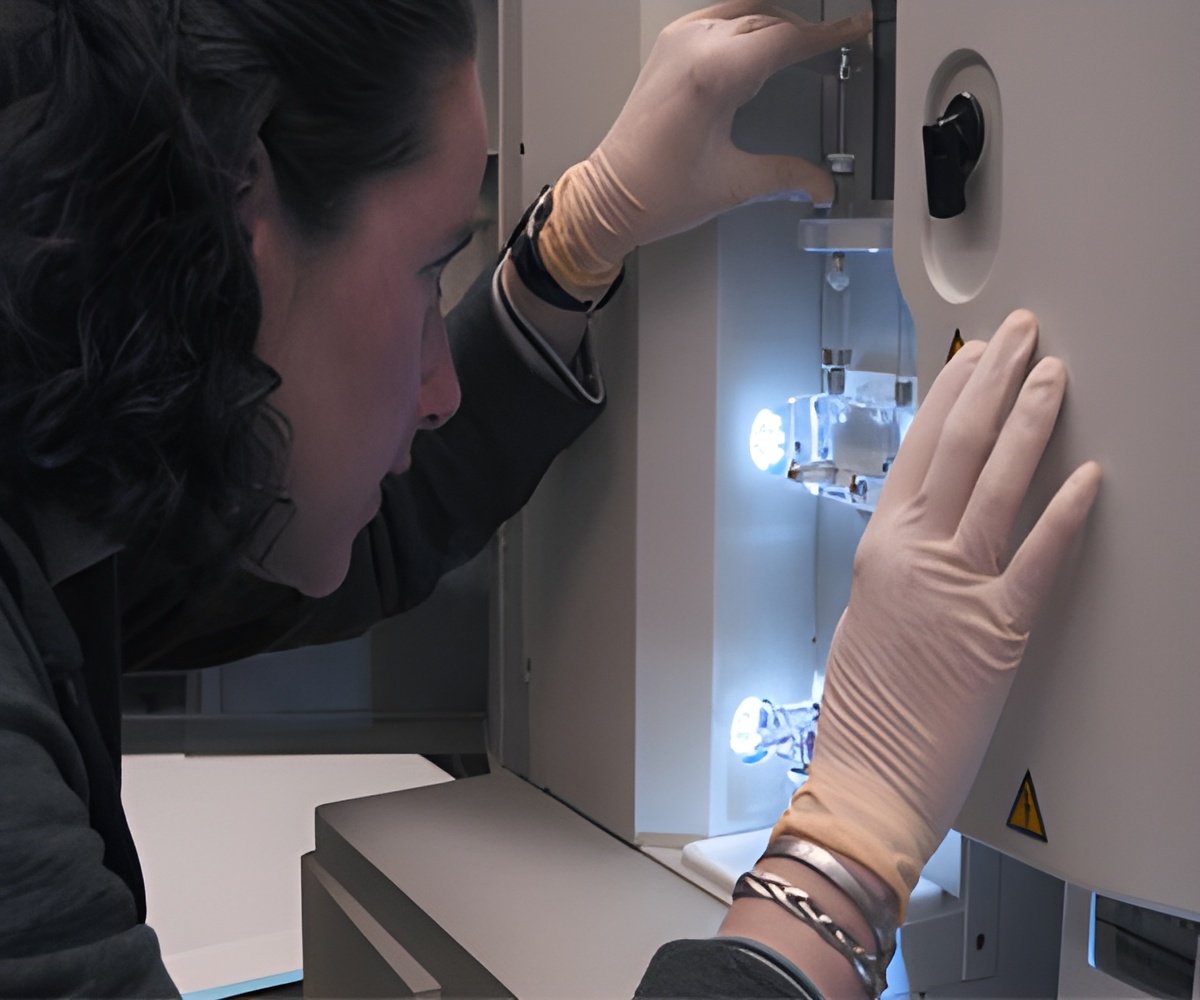
Such game-changing technology is needed to make genome sequencing a reality. The current hurdle is to do so for less than $1,000, an amount for which insurance companies are more likely to provide reimbursement.
In their latest research breakthrough, the team fashioned a tiny, DNA reading device a thousands of times smaller than width of a single human hair.
The device is sensitive enough to distinguish the individual chemical bases of DNA (known by their abbreviated letters of A, C, T or G) when they are pumped past the reading head.
Proof-of-concept was demonstrated, by using solutions of the individual DNA bases, which gave clear signals sensitive enough to detect tiny amounts of DNA (nanomolar concentrations), even better than today's state-of-the-art, so called next-generation DNA sequencing technology.
Making the solid-state device is just like making a sandwich, just with ultra high-tech semiconductor tools used to slice and stack the atomic-sized layers of meats and cheeses like the butcher shop's block. The secret is to make slice and stack the layers just so, to turn the chemical information of the DNA into a change in the electrical signal.
Advertisement
Then a hole is cut through the sandwich: DNA bases inside the hole are read as they pass the gap between the metal layers.
Advertisement
"Previous attempts to make tunnel junctions for reading DNA had one electrode facing another across a small gap between the electrodes, and the gaps had to be adjusted by hand. This made it impossible to use computer chip manufacturing methods to make devices," said Lindsay.
"Our approach of defining the gap using a thin layer of dielectric (insulating) material between the electrodes and exposing this gap by drilling a hole through the layers is much easier," he said. "What is more, the recognition tunneling technology we have developed allows us to make a relatively large gap (of two nanometers) compared to the much smaller gaps required previously for tunnel current read-out (which were less than a single nanometer wide). The ability to use larger gaps for tunneling makes the manufacture of the device much easier and gives DNA molecules room to pass the electrodes."
Specifically, when a current is passed through the nanopore, as the DNA passes through, it causes a spike in the current unique to each chemical base (A, C, T or G) within the DNA molecule. A few more modifications are made to polish and finish the device manufacturing.
The team encountered considerable device-to-device variation, so calibration will be needed to make the technology more robust. And the final big step - of reducing the diameter of the hole through the device to that of a single DNA molecule - has yet to be taken.
Source-Eurekalert














